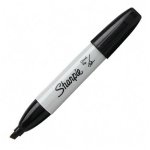Oakland Bronco
Sr. Member
This is what I need to paint:
* Gel coat fiberglass door panels and interior rear quarter panels
* Stock dash
* Stock steering column
Color is black, and I want to paint them with the same paint for a matching color, sheen, and finish. Recommendations?
* Gel coat fiberglass door panels and interior rear quarter panels
* Stock dash
* Stock steering column
Color is black, and I want to paint them with the same paint for a matching color, sheen, and finish. Recommendations?











